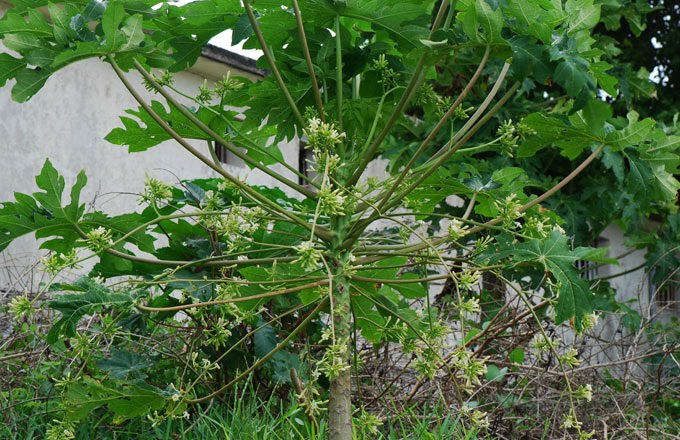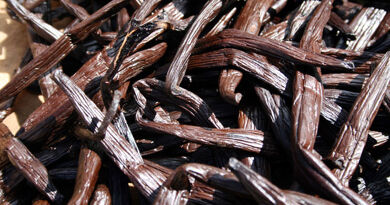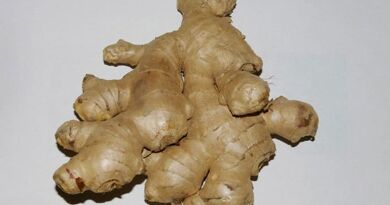The Papaya Tree
Very common in Martinique, this small tree grows there everywhere like the weed, even in the most deprived places. The fact that it is found nowhere in the world in the wild, does not allow to know its origin with precision. However, it is believed to come from Central America. It was already in our islands at the beginning of the colonization, because it was described in a precise way by the R.P. Du Tertre
“Most of the newly cleared dwellings produce, without any cultivation, very particular trees in their shape: because they are as big as the leg, high with a spike or about, straight like arrows and without any branch. These trees are hollow and have only an inch or so, of such tender wood, that the whole tree is easily cut with a mop. ” He continued thus: “all its leaves (which are similar to those of the Fig tree in France, but twice as large) are attached from the top of the tree to a foot below, by long tails like the arm , as large as the thumb and large as flutes. Below all these leaves, there are about thirty fruits attached immediately around the tree, of which the lowest are the largest and most ripe ”.
As with many of our trees and shrubs, we find, in the wild, male Papayers and female Papayers. Both bloom, but only the female plants bear fruit. The male flowers are the same color as the female flowers. They are yellowish-white, borne on very long peduncles. The larger female flowers, on the other hand, have the shape of a small bottle, capped with a sort of fringe. It is difficult to distinguish the two trees when they are not in bloom.
A fruit with a thousand virtues
Medium-sized berry, the Papaya can reach from 15 cm to 40 cm in size and a diameter from 7 to 25 cm. It is generally green before maturity and yellow-orange when ripe. It is a healthy, refreshing fruit, to which we attribute, in our islands, many virtues. It is particularly advisable to eat it in the morning on an empty stomach. The deworming grains are an excellent treatment against intestinal worms and constipation. Papaya contains a number of vitamins A. B and C, calcium and iron too. You can eat it fresh, in the form of juice, as a jam too. But papaya juice is not yet really part of our eating habits.
An enzyme: papain
In addition to an abundant latex, the whole plant contains a diastase or enzyme, papain, which digests proteins. This property is used to tenderize meats. It seems that it is enough to wrap a hard meat in Papaya leaves, so that it is tender when cooked. According to some authors, papain has other uses: “it is used in some countries in pharmacies, in preparations intended for the treatment of gastric or duodenal insufficiencies; it is also involved in making quality “chewing gum”, but also in breweries to improve malting by treating barley, during the wetting operation. Bacteriological and biochemical laboratories use it for the preparation of culture media ”(R. Van Laere).
Various varieties of Papaya trees
Some Papaya trees give generally round small fruits, others, on the other hand, bear large fruits, very elongated, resembling Watermelons. This last variety, to believe the R.P. Du Tertre, would be from the island of Sainte-Croix. According to him, the French, chased from this island by the English, brought the seeds to Guadeloupe in 1645. In all likelihood, this Papaya tree, brought from SainteCroix, is of the same species as the other with round fruit (Carica papaya L.) and from the same family. It is also quite close to Passifloraceae and Cucurbitaceae.



